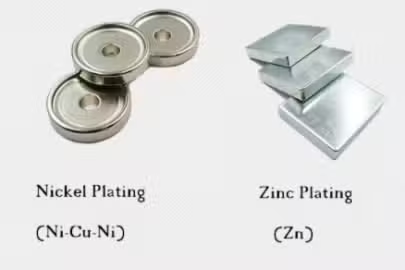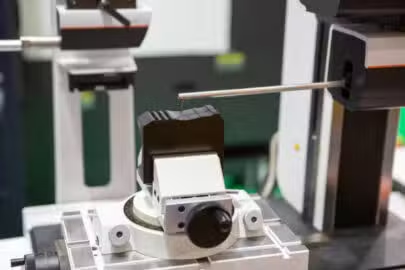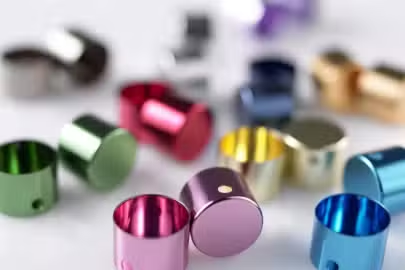Anodising is a versatile surface finishing process that enhances aluminum’s durability, corrosion resistance, and aesthetic appeal. Among its various types, Type 2 and Type 3 anodising stand out for their unique properties and applications.
While both improve aluminum’s performance, they serve different purposes depending on the required durability, appearance, and environmental exposure. This article explores the differences between Type 2 and Type 3 anodising, helping you decide which process best suits your project.
Type 2 vs Type 3 Anodising: Differences Comparison

Understanding the differences between Type 2 and Type 3 anodising is crucial for selecting the right surface treatment for your aluminum products. Each type offers distinct benefits regarding durability, aesthetics, and functionality, making them suited to different applications. Let’s explore how these two anodising processes compare.
Type 2 Anodising (Sulphuric Acid Anodising)
Type 2 anodising is the most common form of anodising, using sulphuric acid as the electrolyte. It produces a thin oxide layer, typically between 5 to 25 microns, which provides moderate corrosion resistance and is ideal for decorative purposes.
Key Features of Type 2 Anodising:
- Thickness: 5–25 microns.
- Purpose: Primarily for aesthetic applications, offering a smooth finish.
- Colour Options: These can be dyed in various colours, offering design flexibility.
- Durability: Suitable for environments with moderate wear and corrosion exposure.
- Applications: Consumer electronics, automotive trim, architectural fixtures, and jewellery.
Type 3 Anodising (Hard Anodising)
Type 3 anodising, often referred to as hard anodising, is performed under more stringent conditions, such as lower temperatures and higher voltages. This process creates a thicker, denser oxide layer, typically between 25 to 100 microns, resulting in exceptional hardness and abrasion resistance.
Key Features of Type 3 Anodising:
- Thickness: 25–100 microns.
- Purpose: Focused on durability and performance in extreme conditions.
- Colour Options: Limited to dark shades, usually grey or black, due to the dense oxide layer.
- Durability: Highly resistant to wear, abrasion, and corrosion.
- Applications: Aerospace components, military equipment, industrial machinery, and firearms.
Contrast Table
| Feature | Type 2 Anodising | Type 3 Anodising |
| Oxide Layer Thickness | 5–25 microns | 25–100 microns |
| Durability | Moderate | High |
| Abrasion Resistance | Moderate | Exceptional |
| Corrosion Resistance | Good | Excellent |
| Colour Range | Wide variety, including vibrant colours | Limited to darker shades (grey/black) |
| Applications | Decorative, consumer products | Industrial, aerospace, military |
| Cost | Lower | Higher due to the stringent process |
Type 2 vs Type 3 Anodising: How to Choose?

Selecting the right type of anodising is a critical step in ensuring that your aluminum components meet the functional and aesthetic requirements of your project. Both Type 2 and Type 3 anodising offer distinct benefits and are suited to different applications. Below, we delve deeper into the key considerations that can help you make an informed choice.
Durability Requirements
Durability is often a primary concern when choosing an anodising type. Aluminum products used in harsh environments or subjected to frequent wear and tear need a robust protective coating.
Type 3 Anodising for Maximum Durability: Type 3 anodising is renowned for its exceptional hardness and abrasion resistance, thanks to its thicker oxide layer (25–100 microns). This makes it the go-to option for components that must withstand mechanical wear, friction, and impact. For example:
- Aerospace parts: Exposed to high-altitude conditions, where they face extreme temperatures and pressure variations.
- Military equipment: Requires resistance to heavy-duty use in challenging environments.
- Industrial machinery components: Often subjected to continuous movement and abrasive materials.
Type 2 Anodising for Moderate Durability Needs: For applications where wear resistance is important but not critical, Type 2 anodising provides sufficient durability. With an oxide layer thickness of 5–25 microns, it offers moderate protection against corrosion and wear. Common uses include:
- Consumer products: Such as smartphones, laptops, and cameras, where durability is important, but aesthetics are prioritised.
- Architectural elements: Including window frames, railings, and decorative panels that encounter limited physical stress.
Aesthetic Considerations
In many industries, appearance is just as important as functionality. Anodising can enhance aluminum’s natural beauty and provide a vibrant, durable finish. However, the aesthetic potential varies significantly between Type 2 and Type 3 anodising.
Type 2 Anodising for Colour Flexibility: Type 2 anodising excels in applications where colour and finish are key. The thinner, porous oxide layer readily absorbs dyes, enabling a wide variety of colour options. From bright and bold hues to subtle metallic shades, Type 2 anodising offers endless possibilities for customisation. This makes it particularly popular for:
- Consumer electronics: Where sleek, modern designs are crucial.
- Home décor: Such as light fixtures, door handles, and kitchen appliances.
- Promotional products: Like custom-branded water bottles, pens, and corporate gifts.
Type 3 Anodising for Sleek, Professional Finishes: In contrast, the dense oxide layer produced by Type 3 anodising limits dye absorption, restricting the colour palette to darker shades like black, grey, and bronze. Despite this limitation, these colours provide a professional, understated aesthetic suitable for:
- High-performance tools and equipment: Where function is prioritised but a professional look is still desired.
- Luxury automotive and aerospace components: Featuring a sleek, high-tech appearance.
Budget Constraints
Budget plays a crucial role in selecting the right anodising process. The costs associated with anodising can vary depending on the thickness of the oxide layer, processing time, and energy requirements.
Cost-Effectiveness of Type 2 Anodising: Type 2 anodising is generally more economical due to its less intensive process. It requires lower energy input and shorter processing times, making it a budget-friendly option for large-scale production runs or projects with tight financial constraints. For companies producing consumer goods or decorative items, Type 2 anodising offers a cost-effective way to achieve durable and attractive finishes.
Higher Initial Cost but Long-Term Savings with Type 3 Anodising: Although Type 3 anodising involves higher upfront costs, it often proves more economical in the long run. The superior durability and corrosion resistance reduce maintenance, repair, and replacement costs. Industries such as aerospace, defence, and heavy machinery view this as a necessary investment to ensure the longevity and reliability of their products.
Environmental Exposure
The operating environment significantly impacts the performance of anodised aluminum. Choosing the right anodising type ensures the material can withstand specific environmental conditions without degrading.
Type 2 Anodising for Mild to Moderate Environments: Type 2 anodising offers adequate corrosion resistance for applications in environments with limited exposure to harsh elements. Examples include:
- Indoor environments: Where components are shielded from extreme temperatures, moisture, and chemicals.
- Moderate outdoor use: Such as residential window frames or signage exposed to occasional rain or UV light.
Type 3 Anodising for Extreme Conditions: In environments where aluminum components face severe exposure, such as marine, industrial, or desert settings, Type 3 anodising provides unmatched protection. Its thicker oxide layer offers excellent resistance to:
- Saltwater corrosion: Making it ideal for marine applications like boat fittings and offshore platforms.
- Chemical exposure: Common in industrial plants or laboratories where corrosive substances are present.
- High-temperature environments: Ensuring stability and performance in aerospace and automotive engine parts.
Additional Factors to Consider
While the primary differences between Type 2 and Type 3 anodising have been outlined, there are several other aspects to consider when making your decision.
Maintenance and Cleaning Requirements
- Type 2 anodising requires gentle cleaning to maintain its decorative finish.
- Type 3 anodising surfaces are more robust and can withstand harsher cleaning methods, making them ideal for industrial applications where regular cleaning is necessary.
Weight Considerations: Type 3 anodising adds slightly more weight to the component due to the thicker oxide layer. For weight-sensitive applications like aerospace, this should be taken into account.
Project Scale and Timeline: For large-scale projects with tight deadlines, the quicker processing time of Type 2 anodising can be advantageous. Type 3 anodising, with its longer processing requirements, may be better suited for specialised, high-value components.
Tips for Optimising Anodising Selection

Choosing between Type 2 and Type 3 anodising is not always straightforward. To ensure your aluminum components meet their functional and aesthetic requirements, it’s essential to assess various factors. Below, we delve into practical tips that can guide your decision-making process.
Consider the End-Use
Understanding the specific application of your anodised product is crucial. Different uses demand distinct properties, and selecting the right anodising type ensures optimal performance.
High-Stress Environments: In situations where components will face significant wear, high friction, or harsh environmental conditions, Type 3 anodising is typically the preferred choice. Its thicker oxide layer offers exceptional hardness and corrosion resistance. Applications include aerospace components, industrial machinery, and military-grade equipment, where durability is non-negotiable.
Aesthetic Applications: For products prioritising visual appeal, such as consumer electronics, architectural elements, or automotive trims, Type 2 anodising is the way to go. Its thinner oxide layer allows for vibrant colours and sleek finishes, making it ideal for decorative purposes while still providing moderate corrosion resistance.
Combine Processes Where Possible
In some instances, leveraging both anodising types on the same product can yield the best results. This hybrid approach balances aesthetics with functionality.
Dual Anodising for Complex Products: A product may have sections that require different anodising treatments. For example, a high-end electronic device might use Type 2 anodising for its coloured exterior casing, while internal components, subjected to heat or wear, benefit from Type 3 anodising.
Cost Efficiency: Using Type 3 anodising only where necessary helps control costs without sacrificing performance. This approach is particularly beneficial for projects with mixed functional and aesthetic demands, such as tools, industrial components, or luxury goods.
Seek Expert Guidance
Partnering with a professional anodising provider can significantly improve the outcome of your project. Here’s why expert input matters:
Customised Solutions: Every project is unique, and anodising experts can tailor processes to your specific needs. Whether it’s achieving precise thickness levels, matching specific colours, or ensuring optimal durability, professional advice can make all the difference.
Material Compatibility: Not all aluminum alloys are created equal. Some are more suitable for anodising than others. An expert can guide you on the best alloy to use, helping to avoid issues like inconsistent finishes or reduced performance.
Testing and Prototyping: Professional anodisers often provide testing and prototyping services, allowing you to evaluate how your product will perform under different anodising types. This can save time and resources in the long run by ensuring the final product meets all requirements before full-scale production begins.
Other Key Considerations
While the core factors of durability, aesthetics, and cost dominate the anodising decision process, several other elements are worth considering to optimise your choice.
Environmental Exposure: The environment in which your product will operate greatly influences the appropriate anodising type. Type 2 anodising suffices for mild conditions, offering protection against moderate corrosion. However, in extreme environments, such as marine or chemical-heavy industrial settings, Type 3 anodising provides superior protection, preventing degradation over time.
Longevity and Maintenance: Type 3 anodising often leads to reduced maintenance costs due to its robust protective layer. For products with high life-cycle demands, the initial investment in Type 3 can result in significant savings through fewer repairs and replacements. Conversely, Type 2 anodising, while less durable, can still deliver excellent performance in less demanding contexts, provided periodic maintenance is factored in.
Budgetary Constraints: Type 2 anodising is typically more budget-friendly, making it an excellent option for large-scale projects with less stringent durability requirements. However, if long-term performance and minimal maintenance are crucial, the additional upfront cost of Type 3 anodising often proves worthwhile.
Evaluating Your Anodising Needs
When it comes to optimising your anodising selection, the process involves balancing several competing priorities. Here’s a quick checklist to help with your decision:
- Durability Needs: Will the product face high stress or abrasive environments? Choose Type 3.
- Aesthetic Goals: Do you need vibrant colours and a polished look? Type 2 is ideal.
- Budget Considerations: How much are you willing to invest upfront versus over the product’s lifecycle?
- Environmental Factors: Will the product encounter extreme weather, saltwater, or industrial chemicals?
- Product Lifecycle: Is longevity and reduced maintenance a priority?
Conclusion
Choosing between Type 2 and Type 3 anodising is essential for achieving the right balance of aesthetics, durability, and performance for your aluminum components. Type 2 anodising offers versatile colours and a cost-effective option, while Type 3 is ideal for high-performance applications needing extreme durability.
For expert anodising, Zintilon provides tailored solutions with a focus on quality and sustainability. Zintilon’s advanced Type 2 and Type 3 anodising services ensure every product meets exacting standards, balancing visual appeal with robust protection. Trust Zintilon for anodising that combines precision, innovation, and environmental responsibility, helping your projects excel.
Great, Together



